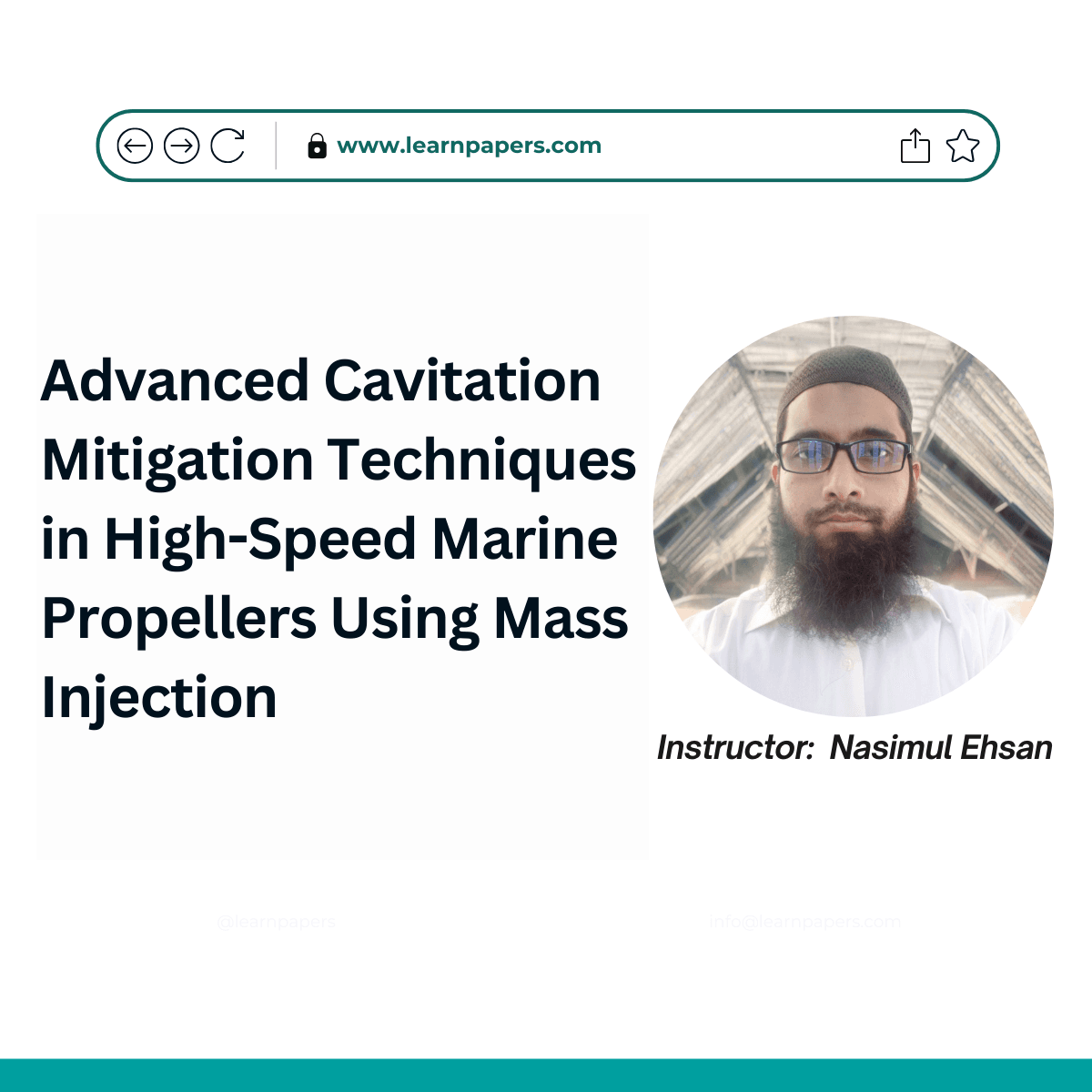Advanced Cavitation Mitigation Techniques in High-Speed Marine Propellers Using Mass Injection

About Course
Cavitation is a persistent challenge in high-speed marine propellers, leading to performance loss, noise, and material degradation. This course delves into advanced computational fluid dynamics (CFD) techniques to analyze and mitigate cavitation using mass injection methods. By leveraging numerical models such as the k–ω SST turbulence model with curvature correction and the Zwart cavitation model, this course provides insights into optimizing mass injection for economic and practical applications in the maritime industry.
Designed for naval architects, marine engineers, and CFD researchers, this course offers theoretical foundations and practical simulations using ANSYS Fluent to explore cavitation mitigation strategies.
Abstract:
Cavitation significantly affects the performance and longevity of high-speed marine propellers. Among various mitigation techniques, mass injection has gained attention due to its potential to reduce cavitation damage effectively. This course introduces numerical methods to evaluate the mechanical properties of injected fluids, their compressibility, and the impact of injection orientation and velocity on cavitation mitigation. A modified INSEAN E779A propeller is analyzed under various conditions to assess the efficiency of air and water injection methods. The study confirms that compressible fluid injection (air) is superior to incompressible fluid injection (water) in terms of energy efficiency and cavitation control. Additionally, the course highlights the importance of dynamic and responsive injection control systems to optimize mass injection strategies.
DOI:
Course Content
Module 1: Fundamentals of Cavitation in Marine Propellers
Module 2: Numerical Modeling of Cavitation Phenomena
Module 3: Mass Injection Method for Cavitation Mitigation
Module 4: CFD Setup and Simulation in ANSYS Fluent
Module 5: Analyzing Results and Optimization Strategies
Module 6: Practical Applications and Future Research Directions
Student Ratings & Reviews

